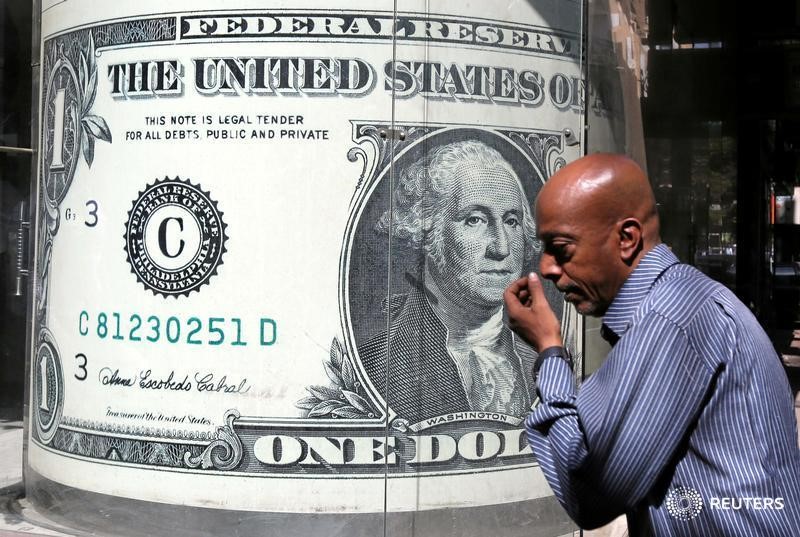Investing.com’s stocks of the week
Investing.com - The U.S. dollar was steady near three-and-a-half week highs on Wednesday in Asia, while the British pound edged up after U.K. Prime Minister Theresa May presented a “new” Brexit deal.
The U.S. dollar index that tracks the greenback against a basket of other currencies was last at 97.868, not far from Tuesday's highs of 97.975, the most since April 26.
Demand for the greenback continued to be underpinned after Federal Reserve Chairman Jerome Powell indirectly argued against cutting interest rates in the near term due to the already-high level of corporate debt.
“Business debt has clearly reached a level that should give businesses and investors reason to pause and reflect,” Powell said at a conference, noting that corporate borrowing is at a record level of around 35% of corporate assets.
News that the U.S. granted Chinese telecommunications equipment maker Huawei Technologies a license to buy U.S. goods for at least 90 days also sent the U.S. dollar higher overnight as U.S. Treasury yields ticked higher in response to gains in the equities market.
But investor sentiment remained subdued after Chinese ambassador to the U.S. Cui Tiankai blamed Washington for “changing its mind so often” in trade talks and that the U.S. is the side that broke the deal already reached.
The Chinese yuan slipped against the U.S. dollar following the news, while reports that Chinese President Xi Jinping suggested that the trade war would not end in the near future was also cited as a headwind for the Chinese currency.
Xi did not directly mention the U.S. or the ongoing trade war, but his remarks were widely interpreted as a sign that Beijing is not going to cave in to Washington's demands anytime soon.
“We are here at the starting point of the Long March to remember the time when the Red Army began its journey,” Xi said in the Jiangxi province during a domestic tour. “We are now embarking on a new Long March, and we must start all over again!”
The “Long March” refers to China’s civil war in the 1930s.
The GBP/USD pair was up 0.1% to after U.K. Prime Minister Theresa May set out a “new” Brexit deal that offers the prospect of a vote on holding a second referendum, but traders and analysts expressed concerns that the new proposal was largely the same as her previous deals.
